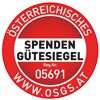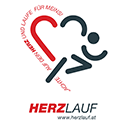
Parents
True love - the desire to help others to be who they really are.
My baby has a congenital heart defect (CHD)

You can’t believe what your doctor has just said. Concerned they repeat:
“Your child has a heart defect.”
You stop listening. You shut down as your whole world implodes. That’s how many parents describe the moment their child is diagnosed with a heart problem. Eventually, the panic, anger and fear you feel give way to a need for clarity and information. You don’t want to close your eyes, you want to face this head-on, and you want to arm yourself with as much information on congenital heart defects as possible.
Learning about CHD can ease the anxiety.
Knowing that you are not alone can ease the pressure.
One in every 100 babies in the world is born with a heart defect.
As sad as it is: Every year, about 700 babies in Austria are born with heart anomalies.
Each year, that is one tiny struggling heart too many. Two thirds of children with heart defects have no chance of a happy childhood without the necessary surgery. This leaves many parents feeling helpless, overwhelmed and on the brink of despair. Heart parents need all kinds of support and many helping hands.

Types of heart defects

Heart anomalies can sometimes be linked to risk factors such as the mother having a viral infection, drug use during pregnancy or the mother suffering from serious illnesses during pregnancy.
However, for most babies, there is no obvious or known cause of their heart condition.
Anatomically, CHD can take the following forms:
- A hole in the ventricular septum, the wall of tissue separating the right and left ventricle (heart chamber). This causes a shunt, which is a biological or artificial passage between the systemic and pulmonary circulation (left and right ventricle), pumping blood through the body and lungs respectively.
- The valves and the arteries are narrower than normal (stenosis)
- The main arteries, a ventricle or the heart itself are in the wrong position (malposition) or have swapped positions (transposition)
- The ventricles or arteries are underdeveloped, they are too small or missing
Symptoms depend on the type and severity of the heart defect. Some of the most common symptoms are:
- Tiredness and fatigue (for example, the baby sweats a lot or gets tired when feeding, poor weight gain)
- A blue tinge to the skin and mucous membranes (cyanosis)
- Irregular heartbeat, difficulty breathing, enlarged liver, delayed growth
Some heart defects cause no or only mild problems.
Some symptoms may only present later in life as the child grows up.










